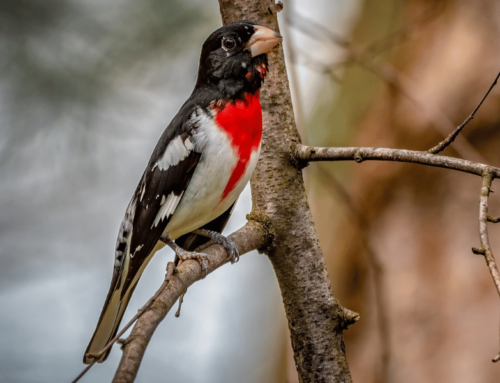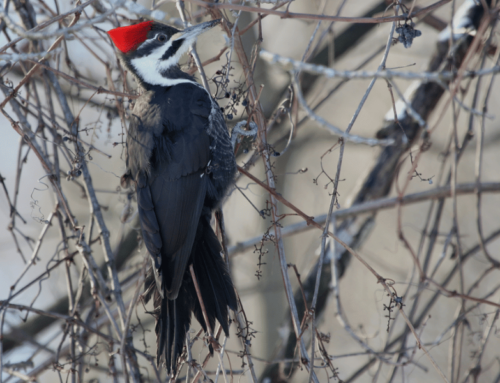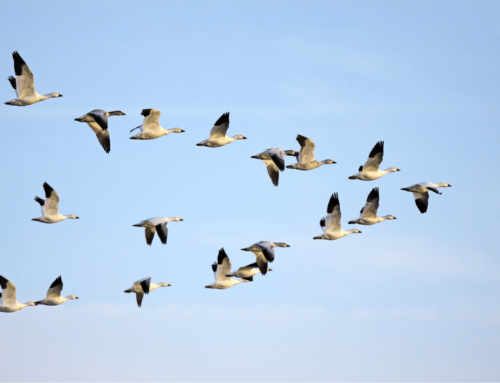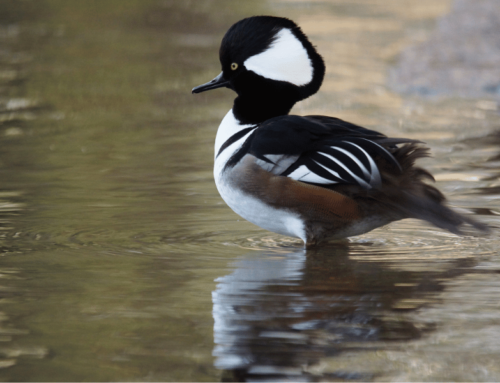It’s good to know the birdwatching slang and phrases that you will encounter if you’re new to this hobby. When discussing and learning from more experienced birders, knowing the following terms will enrich your experience and help you learn faster.
This post is all about birdwatching slang and vocabulary.
Common Birdwatching Terms and Phrases
Bins/Binos:
Short for binoculars
TeeVee:
Short for Turkey Vulture. This species is common in the American South and Southwest. They are the most common vulture in the Americas. You can identify them by their pink and narrow heads.
Birding/Birder:
Birding is a synonym for birdwatching and a birder is a someone who participates in birdwatching.
Chaser/Twitcher:
Chasers and twitchers are people who explicitly go out with the purpose of finding a rare bird that they can add to their life list. Twitchers/chasers will travel for hours to see a rare bird.
Trash Bird:
A common bird that most birdwatchers have little interest in watching when out on a trip, due to how frequently they can be seen in daily life. Some examples would be Rock Pigeons, House Sparrows, Starlings, etc.
The “trash birds” will be different from location to location, as there will likely be different types of birds that are common enough to not be pursued by local birdwatchers.
Life List/Lifer:
You can probably guess what this term is about. A life list is list of birds that a birdwatcher has seen in person and a lifer is a bird that has eluded being seen by an individual birdwatcher.
When rare, non-native birds find themselves temporarily in a country or location that they aren’t normally found in, the twitchers and chasers will flood in to observe and take photos.
Pelagic Trip:
A trip out onto the open ocean to see birds. Usually this is to find gulls, albatrosses, etc.
Crown:
This refers to the top of a bird’s head. Some species can be differentiated from each other by their crown’s appearance.
Plumage:
The colors and pattern present on a bird. Plumage can tell you a lot about a bird besides species identification. In some species, the plumage will be different in subspecies or localities. Male birds during breeding season will often have different plumage for attracting mates.
Preening:
Preening is the bird term for grooming. Keeping feathers clean and free of parasites is important for birds to maintain optimal flying ability, so it isn’t too surprising that birds can spend much of their time preening on a daily basis.
Naturally, flightless birds, such as ostriches, preen far less than flighted birds.
Wattle:
The wattle is the flesh protrusion that hangs from the head of certain bird species. The example that comes to mind for most is the wattles on turkeys.
Pishing:
Pishing is the act of imitating a bird call to hopefully attract nearby birds. Doing this only works with passerines.
Vagrant:
A bird that is currently outside its species’ normal range.
Lore:
The lore of a bird refers to the area on a bird’s face between its eyes and its nostrils. You may think that this isn’t an important thing to know about, but the lore of certain species can be the best way to identify it. For instance, Double-Crested Cormorants and Neotropic Cormorants look very similar but can be differentiated based on the different colors of their lore. The Neotropic Cormorants have a dark lore and the Double-Crested Cormorants have a yellow/orange colored lore.

Scientific Terms
Brood Parasite:
This a term for one of the more perplexing and negative aspects of bird behavior. A brood parasite is a bird that relies on other birds to raise their chicks. This behavior pertains to a bird of one species laying its eggs in the nest of another, allowing the bird to procreate successfully without dealing with parental requirements. This is also found in some fish and insect species.
Host bird species have been observed abandoning nests which have been parasitized and also pushing the parasitic egg out of the nest when it can be identified.
Passerine Birds:
Passerine birds are perching birds. Perching birds make up the order Passeriformes and are the majority of bird species around the world. Passerines have three toes pointing forward and one backward on their feet to make perching easy. They are the birds that people are most likely to encounter in their backyard or in their daily lives.
Raptor:
Raptor refers to birds of prey or predatory birds. This term does not refer to a biological classification, as birds of prey can come from different lineages. Birds commonly refers to as “raptors” include falcons, eagles, hawks, harriers and vultures.
Lots of birds are technically predators, as eating insects or fish are common but those birds are excluded from this definition by ornithologists.
Reptile:
You might think you know what “reptile” means, but there’s a good chance that you’re mistaken. The word “reptile” refers to a specific biological lineage of tetrapods who descended from diapsids (animals with two holes behind each eye).
You have probably heard that birds descended from dinosaurs, but this isn’t technically accurate. The correct relationship between birds and dinosaurs is that birds are a type of dinosaur, in the same way that whales are a type of mammal.
Moreover, since birds are a type of dinosaur and dinosaurs are a type of reptile, this means that birds are a type of reptile. Most people don’t consider birds to be reptiles because of their feathers. This is a silly way to view classification of animals. Mammals for instance, include bats, whales, elephants, rodents and human beings, despite all of their clear physical differences. Thus, excluding birds from being reptiles makes as much sense as excluding whales from being mammals for having fins or excluding humans from being apes because we’re not that hairy anymore.
So technically, the dinosaurs didn’t actually die out. The vast majority of them did, but birds survived and carry on their legacy.
Waterfowl:
This is a term that refers to birds that are highly adapted for living on the surface of water. Ducks, swans and geese are the most well-known of this group but also includes three species of screamers, native to South America. Even if you’re totally new to birdwatching, you’ve probably noticed that almost all species of waterfowl have webbed feet, making their movement across the water easier.
This term is not used for birds like herons and pelicans. Waterfowl are an actual scientific order: Anseriformes.
On the other hand, people will frequently refer to birds that are not in this order as being waterfowl such as coots and grebes as those birds are also adapted to a similar life, using the surface of water just like ducks and geese. The definition might change over time, with one of these versions of the word becoming the solidified version. Until then however, keep in mind that ‘waterfowl’ can be both groups.
Shorebirds:
‘Shorebirds’ is a term just like ‘waterfowl’ in its application. It refers to a specific order of birds, (the Charadriiformes), which are usually seen on the coast and shores of bodies of water, foraging for food around the perimeter of bodies of water or the shores of the ocean. Shorebirds include stilts, snipes, plovers and avocets.
The target food for these birds is invertebrates that are exposed in the mud or sand. Many shorebirds, such as the stilts and avocets, have long bills designed to make it easy to reach food.
Piscivore:
This is a term for birds or any other animal that primarily or exclusively feeds on fish. There are lots of birds that are adapted to eating fish efficiently. Examples of piscivores include bald eagles, kingfishers, ospreys, cormorants, herons and pelicans.
Nectarivore:
This one is more self-explanatory. This term is for birds that feed on nectar. You probably know that hummingbirds are nectarivores but this term also applies to lorikeets and sunbirds.
Sexual Dimorphism:
Sexual dimorphism refers to males and females of a species being distinctly different in appearance. Birds as a group are among the most sexually dimorphic on earth. Many species can be immediately recognized as male due to male birds having more vibrant colors than females.
A few common examples you’re probably already familiar with are the bright red male Northern Cardinals compared to brown females. Male Mallard Ducks have green heads and necks but the females are entirely brown. The most striking, obvious example is comparing male peacocks to their female peahen counterparts. Look them up and compare a displaying male to a drab female.
Not all birds are sexually dimorphic however. Some species have basically no dimorphism at all and sex can only be determined with close examination.
Gizzard:
The gizzard is a special organ in the digestion system that birds and other archosaurs (crocodilians, extinct dinosaurs, extinct pterosaurs). It operates as a second stomach that grinds food into smaller pieces. Often this organ’s function is helped by pieces of stone. The gizzard therefore chews the food for birds. Birds, of course, don’t have teeth and the additional mechanical breakdown for the birds’ digestion allows them to eat a greater range of food effectively.
Birds inherited gizzards from their extinct dinosaur ancestors. Enantiornithes, the extinct birds who possessed teeth, did not have gizzards as they could break food down with their teeth.
Syrinx:
The syrinx is a unique organ that birds have. They are different than the larynx that mammals have, as the syrinx allows some birds to make multiple sounds simultaneously. Birds have larynxes but they cannot vocalize with them.
Nictating Membrane:
This refers to the third eyelid that is used to protect and moisten the eyes of birds. Almost all birds blink using their third eyelid.
Conclusion
This list isn’t comprehensive, of course. There’s more birdwatching slang and scientific terms you can learn when they present themselves later on. The important thing is to always be learning.





